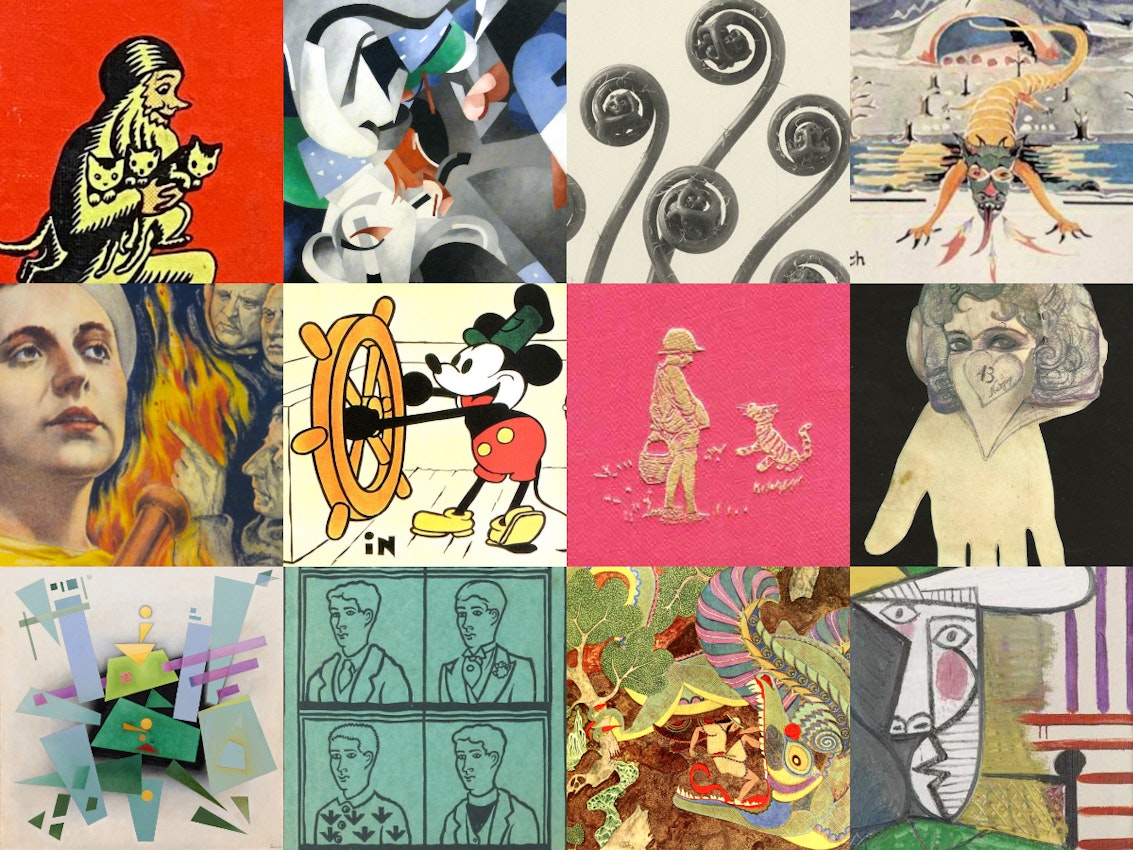 Scroll through the whole page to download all images before printing.
Scroll through the whole page to download all images before printing.The Mouse is free! Kind of...
For anyone vaguely tuned in to the machinations of copyright law, this Public Domain Day (the day at the start of each year on which works enter the public domain) is an extra special one, for it finally sees the appearance of a certain mouse. That's right... Mickey is free! At least the particular iteration of Mickey that first graced our screens in Disney's 1928 film Steamboat Willie. And, at least in the United States, which sees works from 1928 enter the public domain today.
To appreciate the monumental nature of this one needs to understand a little about Disney Corporation's relationship to, and perverse effect on, copyright law in the United States — and so how symbolic Mickey has become in the fight to preserve the public domain. The story starts (or at least takes a significant turn) in 1998 with the passing of the Copyright Term Extension Act, which basically did what it says on the tin: extended copyrights for many thousands of works which otherwise would have entered the US public domain, including Steamboat Willie (and also Plane Crazy). While Disney wasn’t the only lobbyist involved, it was certainly one of the most prominent and its involvement earned the legislation the derisory moniker of “The Mickey Mouse Protection Act”.
The effect of this Act (and previous extending Acts, also involving Disney) has been devastating to the enlargement of the US public domain, locking up an enormous number of works for many decades, but… all things must pass, and so too the copyright on Steamboat Willie. So what does this mean? In a simple sense it means one can use the film as one wishes (in the US at least). And this relates also to the characters of Mickey and Minnie which star in the film, but with two important caveats: i) it’s only these particular versions of Minnie and Mickey (e.g. long arms, gloveless), later iterations are still under copyright; and ii) Disney still has the trademark, so you can’t reuse in a way which implies an affiliation with the company. For a more in-depth look at the issues involved here (including why aspects of the later Mickey iterations might also be fine to reuse), we highly recommend this great post by Jennifer Jenkins from the Center for the Study of the Public Domain and also this Twitter thread by Cory Doctorow.
What else will join the public domain in 2024?
Due to differing copyright laws around the world, there is no one single public domain, but there are three main types of copyright term for historical works which cover most cases. For these three systems, newly entering the public domain today are:
- works by people who died in 1953, for countries with a copyright term of “life plus 70 years” (relevant in UK, Canada, most of the EU, and South America);
- works by people who died in 1973, for countries with a term of “life plus 50 years” (relevant to most of Africa and Asia);
- films and books (incl. artworks featured) published in 1928 (relevant solely to the United States).
Some of you may have been following our advent-style countdown calendar which revealed day-by-day through December our highlights for these new public domain entrants. The last window was opened yesterday, and while such a format was fun for the slow reveal, for the sake of a good gorgeable list we’ve exploded the calendar out into a digestible array below. Enjoy!
Entering the public domain in the US
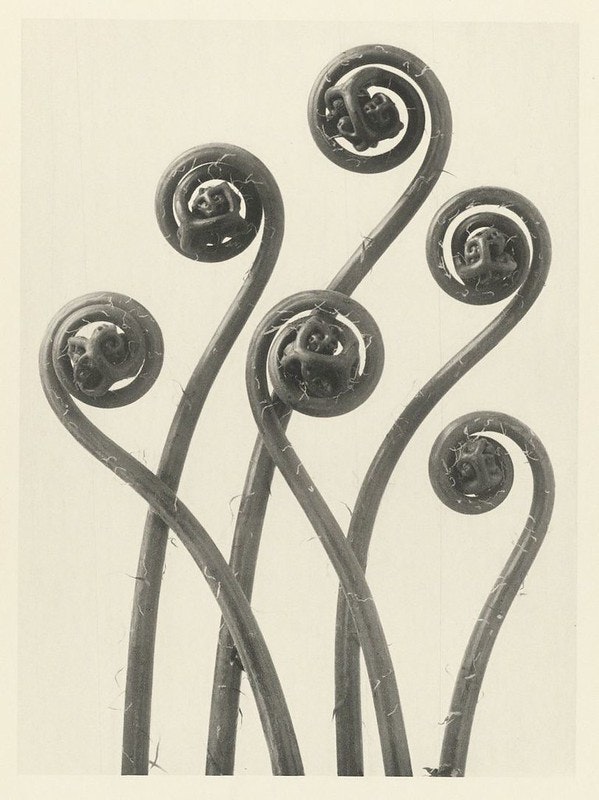 Scroll through the whole page to download all images before printing.
Scroll through the whole page to download all images before printing.Karl Blossfeldt’s Urformen der Kunst
In 1928, at the grand old age of 63, just four years before his death, Karl Blossfeldt produced his first photography book, the internationally best-selling Urformen der Kunst (later translated into English as Art Forms in Plants). The book’s 120 plates display Blossfeldt’s remarkable photographs of plants – varieties from Equisetum hyemale (Winter Horsetail) to Tellima grandiflora (Fringe cups) — all captured in extraordinary detail, as if under the microscope, frozen into new forms almost beyond recognition. Using a relatively simple handmade camera, Blossfeldt achieved startling results — the plants becoming graphic, geometric. Blossfeldt’s work was quiet and unassuming, but it quickly aligned with the avant-gardes of Weimar Germany: from “New Vision” to “New Objectivity”. It provided a counterpart in the natural world to what others had attempted to achieve in the excess of the modern city: from the work of August Sander to László Moholy-Nagy. The critic Walter Benjamin was one of the first to review Blossfeldt’s book, claiming his fellow German had discovered the “optical unconscious”: that which was invisible to the naked eye, revealed retrospectively or technically through the apparatus of the camera. (Wikipedia)
Already public domain in countries with a “life plus 70 years” and “life plus 50 years” copyright.
See images and read about the work in The Public Domain Review
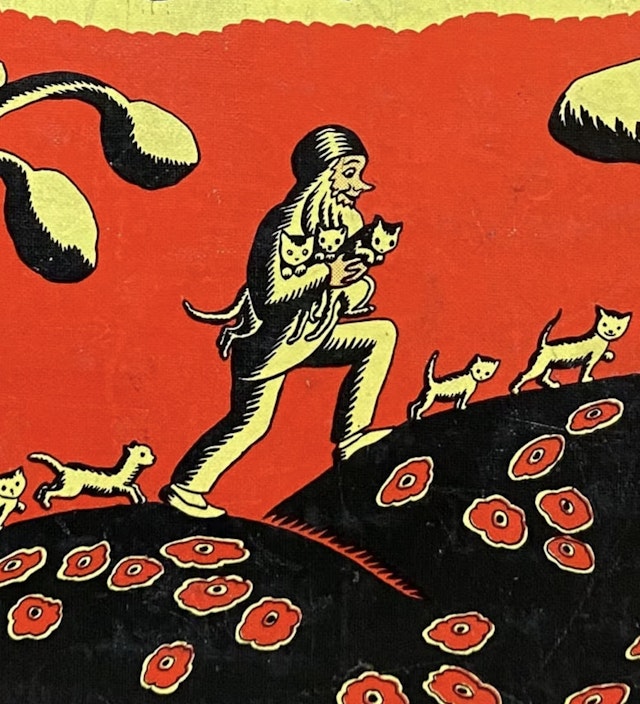 Scroll through the whole page to download all images before printing.
Scroll through the whole page to download all images before printing.Wanda Gág’s Millions of Cats
Millions of Cats (1928), the oldest American picture book still in print, is the work of the American artist, author, translator, and illustrator Wanda Gág. The hand-lettered text, done by the author’s brother, tells the story of an elderly couple who live comfortably, but realize that they are very lonely. The wife wants a cat to love, so her husband sets off in search of a beautiful one to bring home to her. After travelling far away from home, he finds a hillside covered in “cats here, cats there, Cats and kittens everywhere. Hundreds of cats, thousands of cats, Millions and billions and trillions of cats...” This rhythmic phrase is repeated several other times throughout the story. Wanda Gag pioneered the double-page spread in this book. Writer and reviewer Anita Silvey explained, “She used both pages to move the story forward, putting them together with art that sweeps across the entire page spread: her favorite illustration fell in the center of the book - with the old man carrying cats against the rolling hills.” Millions of Cats is on the New York Public Library’s list of 100 Great Children’s Books. (Wikipedia)
Already public domain in countries with a “life plus 70 years” and “life plus 50 years” copyright.
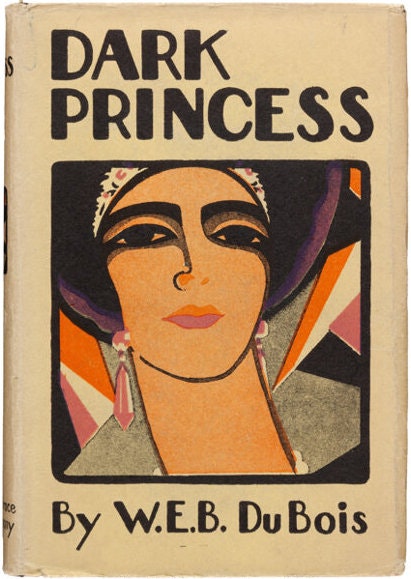 Scroll through the whole page to download all images before printing.
Scroll through the whole page to download all images before printing.W. E. B. Du Bois’s Dark Princess
In Dark Princess (1928), Du Bois, a prominent African American scholar and civil rights activist, delves into themes of race, identity, and international politics. The novel follows the journey of a young African prince, Matthew Towns, as he becomes involved in a political conspiracy to uplift the Black race worldwide. Du Bois explores internationalism and international racial solidarity, as well as corruption and violent radicalism within African-American culture. The book’s subtitle, A Romance, points to the narrative’s double valence. As Michèle Mendelssohn argues, “it is the story of a love affair, as well as the story of an ideological romance that challenges one of the United States’ most cherished ideas about itself, the notion that it is a land of progress and possibility for all. The love lost between the hero and the U. S. is the spur for the novel’s political reorientation.” Not well received when first published, the novel was criticized for its expression of eroticism as well as for what some critics thought was a failed attempt at social realism. Late in life, Du Bois described this as his favorite work. (Wikipedia)
Already public domain in countries with a “life plus 50 years” copyright.
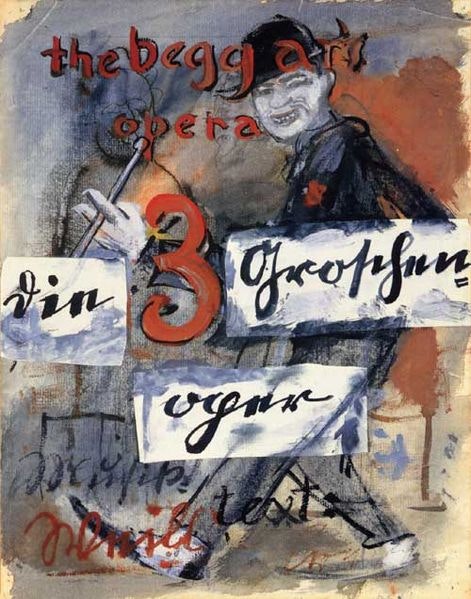 Scroll through the whole page to download all images before printing.
Scroll through the whole page to download all images before printing.Bertolt Brecht’s The Threepenny Opera
Die Dreigroschenoper (The Threepenny Opera) is a German “play with music” by Bertolt Brecht, adapted from a translation by Elisabeth Hauptmann of John Gay’s 18th-century English ballad opera, The Beggar’s Opera, and four ballads by François Villon, with music by Kurt Weill. It opened on 31 August 1928 at Berlin’s Theater am Schiffbauerdamm. The influential play is a satirical take on society, crime, and morality. Set in the grim underbelly of London, the narrative follows the antihero Macheath, known as Mack the Knife, and his exploits as a criminal. and i the process explores the corrupting influence of capitalism, the blurred lines between good and evil, and the nature of justice. With influences from jazz and German dance music, songs from The Threepenny Opera have been widely covered and become standards, most notably “Die Moritat von Mackie Messer” (“The Ballad of Mack the Knife”) and “Seeräuberjenny” (“Pirate Jenny”). (Wikipedia)
Already public domain in countries with a “life plus 50 years” copyright.
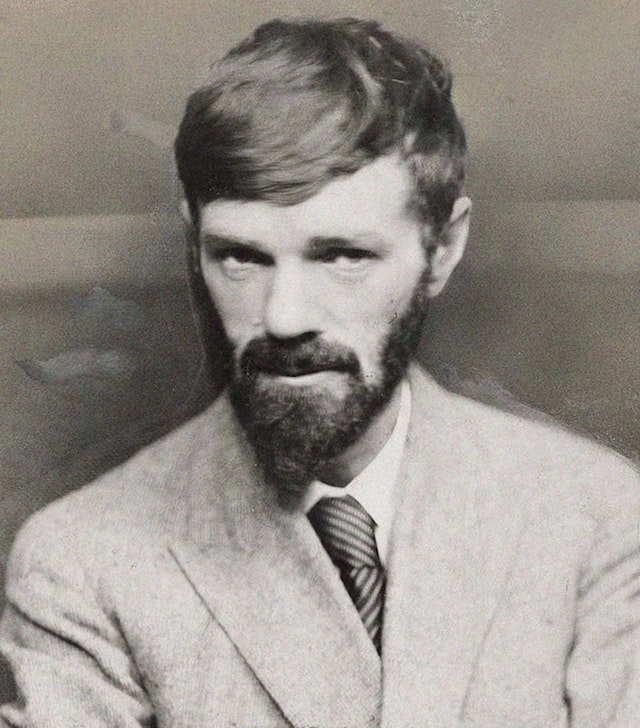 Scroll through the whole page to download all images before printing.
Scroll through the whole page to download all images before printing.D. H. Lawrence’s Lady Chatterley’s Lover
Lady Chatterley’s Lover is the last novel by English author D. H. Lawrence, which was first published privately in 1928, in Italy, and in 1929, in France. An unexpurgated edition was not published openly in the United Kingdom until 1960, when it was the subject of a watershed obscenity trial against the publisher Penguin Books, which won the case and quickly sold three million copies. The book was also banned for obscenity in the United States, Canada, Australia, India and Japan. The book soon became notorious for its story of the physical (and emotional) relationship between a working-class man and an upper-class woman, its explicit descriptions of sex and its use of then-unprintable profane words. (Wikipedia)
Already public domain in countries with a “life plus 70 years” and “life plus 50 years” copyright.
Read on Project Gutenberg
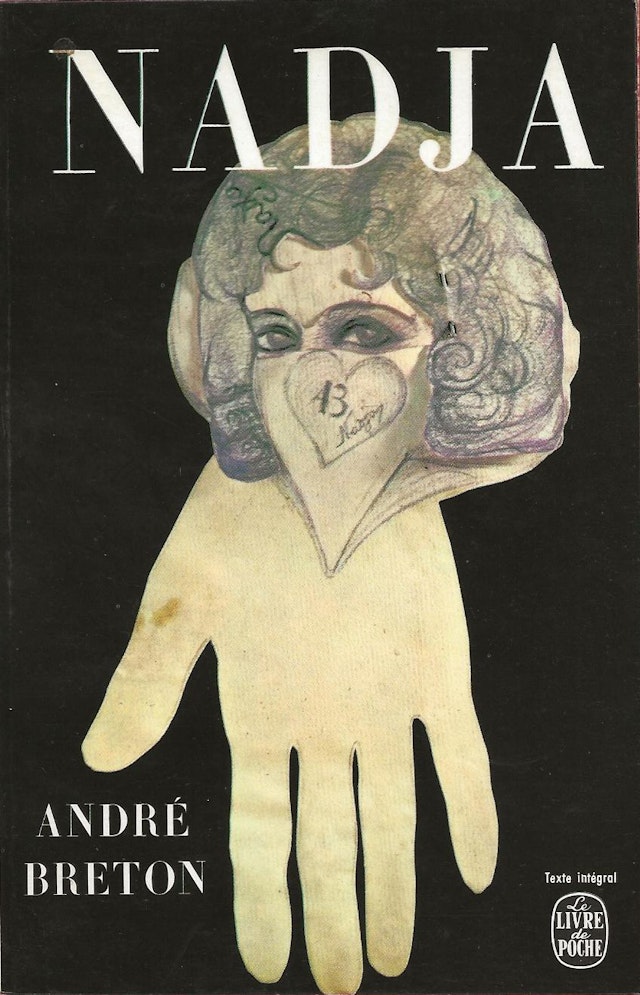 Scroll through the whole page to download all images before printing.
Scroll through the whole page to download all images before printing.André Breton’s Nadja
André Breton’s surrealist novel Nadja (1928) explores the dreamlike and enigmatic encounters with an imaginative woman who later became mentally ill. Through a blend of autobiography and fiction, Breton delves into the realm of the subconscious, where reality and dreams intermingle. The narrative unfolds as a series of chance meetings, discussions, and musings on the nature of love and identity. In many ways Nadja captures the essence of the surrealist movement, emphasizing the irrational and the unexpected. (Wikipedia)
Already public domain in countries with a “life plus 50 years” copyright.
 Scroll through the whole page to download all images before printing.
Scroll through the whole page to download all images before printing.Wyndham Lewis’s The Childermass: Section I
Wyndham Lewis’ 1928 avant-garde novel The Childermass: Section I takes readers on a journey through a post-apocalyptic, dystopian world. The narrative follows the protagonist, Gulliver, as he navigates a surreal landscape inhabited by eccentric and grotesque characters. Challenging traditional narrative conventions and exploring themes of war, technology, and dehumanization, the book is a complex and experimental work of modernist literature that reflects the turmoil and disorientation of the interwar period. (Wikipedia)
Already public domain in countries with a “life plus 50 years” copyright.
 Scroll through the whole page to download all images before printing.
Scroll through the whole page to download all images before printing.Walt Disney’s Steamboat Willie
Steamboat Willie is a 1928 animated short film directed by Walt Disney and Ub Iwerks. Produced in black and white by Walt Disney Studios, the cartoon is considered the debut of both Mickey and Minnie Mouse, although both characters appeared in a test screening of Plane Crazy several months earlier. Steamboat Willie is especially notable for being one of the first cartoons with synchronized sound, as well as one of the first cartoons to feature a fully post-produced soundtrack, which distinguished it from earlier sound cartoons. Music for Steamboat Willie was arranged by Wilfred Jackson and Bert Lewis, and it included the songs “Steamboat Bill”, a composition popularized by baritone Arthur Collins during the 1910s, and “Turkey in the Straw”, a composition popularized within minstrelsy during the 19th century. The film has received wide critical acclaim, not only for introducing one of the world’s most popular cartoon characters but also for its technical innovation. In 1994, members of the animation field voted *Steamboat Willie* 13th in the book The 50 Greatest Cartoons, which listed the greatest cartoons of all time. However, the film has been the center of a variety of controversies, notably regarding the 1998 Copyright Term Extension Act passed in the United States. It was close to entering the public domain in the U.S. several times: each time, copyright protection was extended. It could have entered the public domain in four different years: first in 1955, renewed to 1986, then to 2003 by the Copyright Act of 1976, and then to 2023 by the Copyright Term Extension Act (also known pejoratively as the “Mickey Mouse Protection Act”) of 1998. It has been claimed that these extensions were a response by Congress to extensive lobbying by The Walt Disney Company. (Wikipedia)
Watch the film on YouTube (from the official Walt Disney Animation Studios channel)
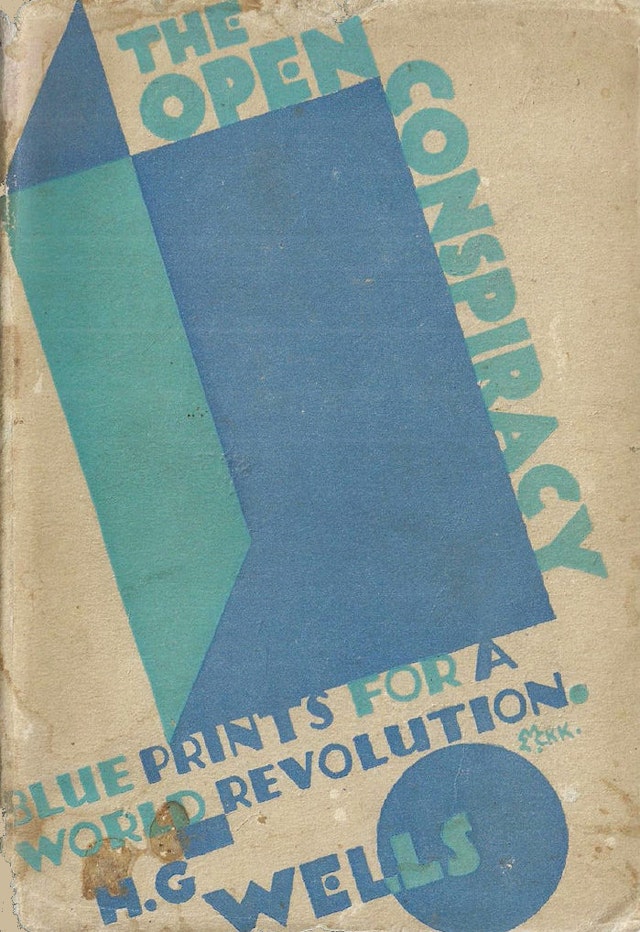 Scroll through the whole page to download all images before printing.
Scroll through the whole page to download all images before printing.H. G. Wells’s The Open Conspiracy
The Open Conspiracy: Blue Prints for a World Revolution was published in 1928 by H. G. Wells. Many of its ideas are anticipated in Wells’s 1926 novel The World of William Clissold. The book is, in Wells’s words, a “scheme to thrust forward and establish a human control over the destinies of life and liberate it from its present dangers, uncertainties and miseries.” It proposes that largely as the result of scientific progress, a common vision of a world “politically, socially and economically unified” is emerging among educated and influential people, and that this can be the basis of “a world revolution aiming at universal peace, welfare and happy activity” that can result in the establishment of a “world commonwealth”. This is to be achieved by “drawing together a proportion of all or nearly all the functional classes in contemporary communities in order to weave the beginnings of a world community out of their selection.” This will ultimately “be a world religion.” (Wikipedia)
Already public domain in countries with a “life plus 70 years” and “life plus 50 years” copyright.
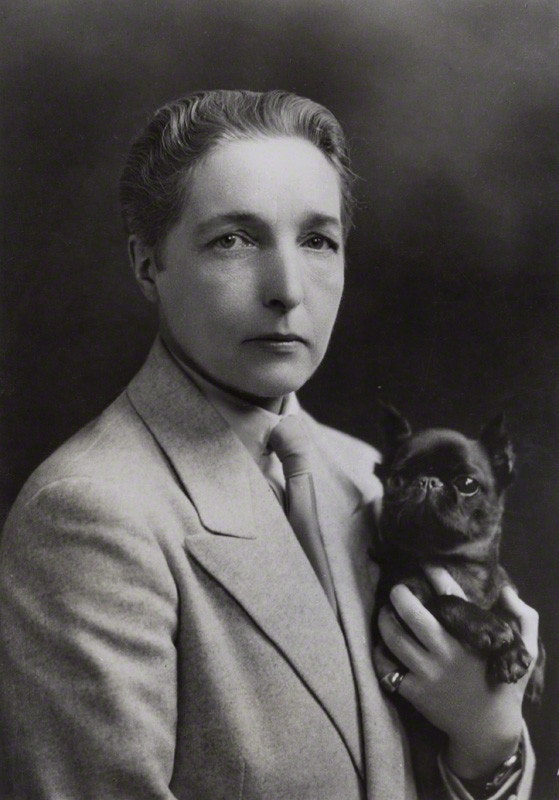 Scroll through the whole page to download all images before printing.
Scroll through the whole page to download all images before printing.Radclyffe Hall’s The Well of Loneliness
The Well of Loneliness (1928) is a lesbian novel by British author Radclyffe Hall. It follows the life of Stephen Gordon, an Englishwoman from an upper-class family whose “sexual inversion” (homosexuality) is apparent from an early age. She finds love with Mary Llewellyn, whom she meets while serving as an ambulance driver in World War I, but their happiness together is marred by social isolation and rejection, which Hall depicts as typically suffered by “inverts”, with predictably debilitating effects. The novel portrays “inversion” as a natural, God-given state and makes an explicit plea: “Give us also the right to our existence”. Shortly after the book’s publication, it became the target of a campaign by James Douglas, editor of the Sunday Express. Douglas wrote that “I would rather give a healthy boy or a healthy girl a phial of prussic acid than this novel.” A British court judged it obscene because it defended “unnatural practices between women” and it would not be published again in England for another two decades. In the United States, the book survived legal challenges in New York state and in Customs Court. Publicity over the legal battles increased the visibility of lesbians in British and American culture, and for decades it was the best-known lesbian novel in English, and often the first source of information about lesbianism that young people could find. (Wikipedia)
Already public domain in countries with a “life plus 70 years” and “life plus 50 years” copyright.
Read on Project Gutenberg and Faded Page
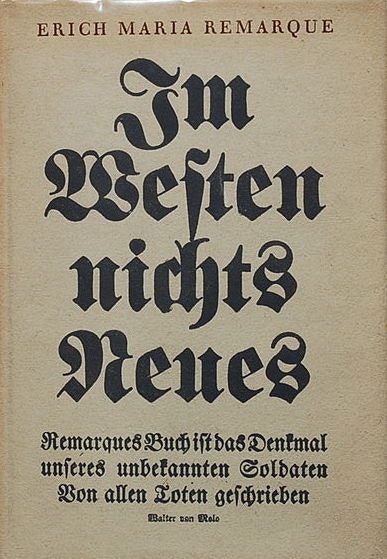 Scroll through the whole page to download all images before printing.
Scroll through the whole page to download all images before printing.Erich Maria Remarque’s All Quiet on the Western Front
First published in late 1928 in the German newspaper Vossische Zeitung, Erich Maria Remarque’s All Quiet on the Western Front was published in book form the following year. This classic anti-war novel is a poignant and powerful depiction of the horrors of World War I. Narrated by the soldier Paul Bäumer, the story describes the German soldiers’ extreme physical and mental trauma during the war as well as the detachment from civilian life felt by many upon returning home from the war. Remarque’s writing is marked by its stark realism and emotional depth, conveying the futility and senselessness of war. The book and its sequel, The Road Back (1930), were among the books banned and burned in Nazi Germany. It sold 2.5 million copies in 22 languages in its first 18 months in print. Three film adaptations of the book have been made, each of which was lauded. The 1930 American adaptation, directed by Lewis Milestone, won two Academy Awards. The 1979 British-American adaptation, a television film by Delbert Mann, won a Golden Globe Award and an Emmy Award. The 2022 German adaptation, directed by Edward Berger, won four Academy Awards. (Wikipedia)
Already public domain in countries with a “life plus 50 years” copyright.
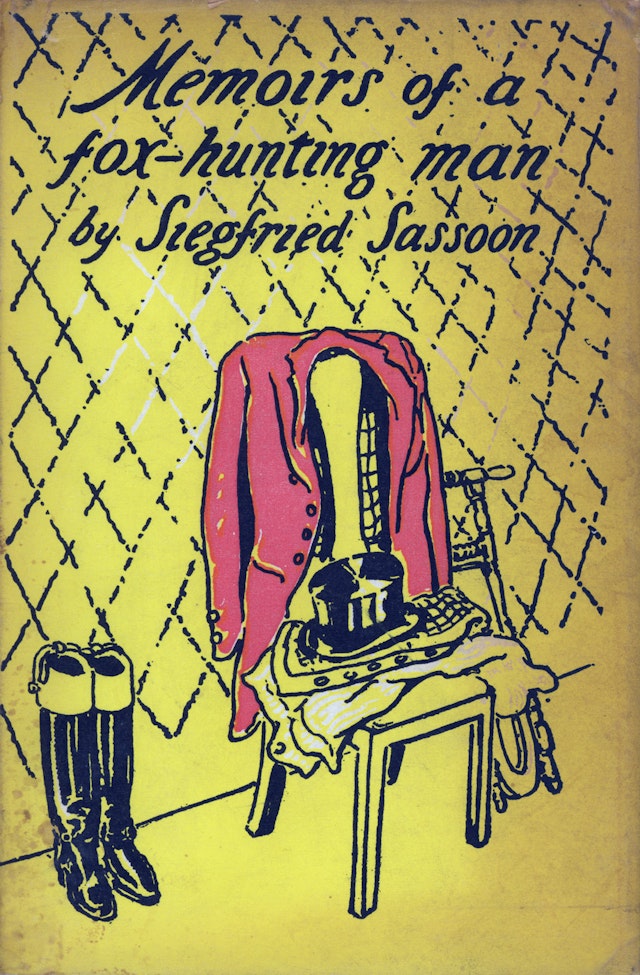 Scroll through the whole page to download all images before printing.
Scroll through the whole page to download all images before printing.Siegfried Sassoon’s Memoirs of a Fox-Hunting Man
Memoirs of a Fox-Hunting Man is a novel by Siegfried Sassoon, first published in 1928 by Faber and Faber. Prior to its publication, Sassoon’s reputation rested entirely on his poetry, mostly written during and about World War I. Only ten years after the war ended, after some experience of journalism, did he feel ready to branch out into prose. So uncertain was he of the wisdom of this move that he elected to publish Memoirs of a Fox-Hunting Man anonymously. It is a depiction of his early years presented in the form of an autobiographical novel, with false names being given to the central characters, including Sassoon himself, who appears as “George Sherston”. Sassoon was motivated to write the work by a war incident, when a fox was loose in the trenches and one of his friends shot and killed it, though it also draws heavily on his pre-war life, with riding and hunting being among the favourite pastimes of the author. Much of the material for the novel came from Sassoon’s own diaries and he said he was inspired by the work of Marcel Proust: “A few pages of Proust have made me wonder whether insignificant episodes aren’t the most significant”. (Wikipedia)
Already public domain in countries with a “life plus 50 years” copyright.
Read on Project Gutenberg
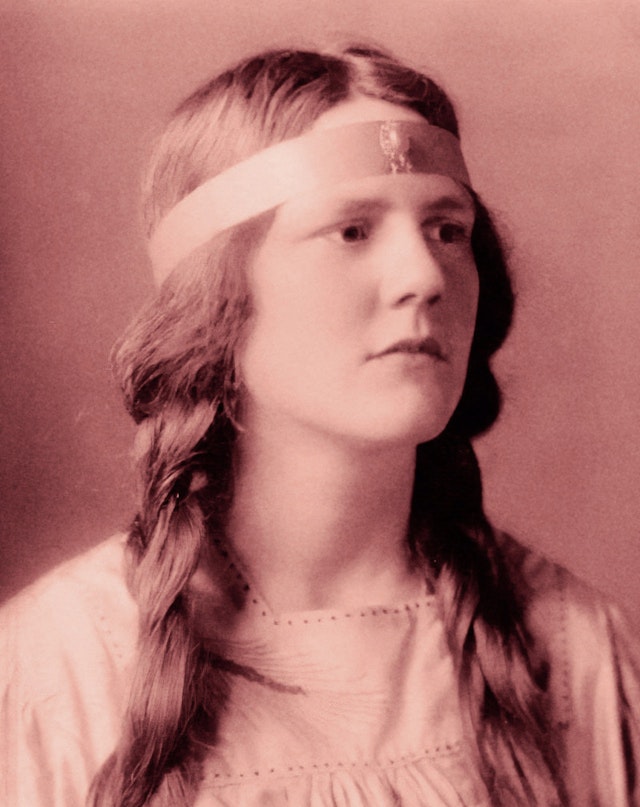 Scroll through the whole page to download all images before printing.
Scroll through the whole page to download all images before printing.Nan Shepherd’s The Quarry Wood
The Quarry Wood (1928) is the debut novel of Anna “Nan” Shepherd, a Scottish Modernist writer and poet, best known for her seminal mountain memoir, The Living Mountain, based on experiences of hill walking in the Cairngorms. Set in the Scottish Highlands, *The Quarry Wood* tells the story of Martha Ironside, a young woman who longs for independence and a life beyond the constraints of her rural upbringing. It’s a lyrical and introspective work that explores themes of self-discovery, feminism, and the human connection to the environment. (Wikipedia)
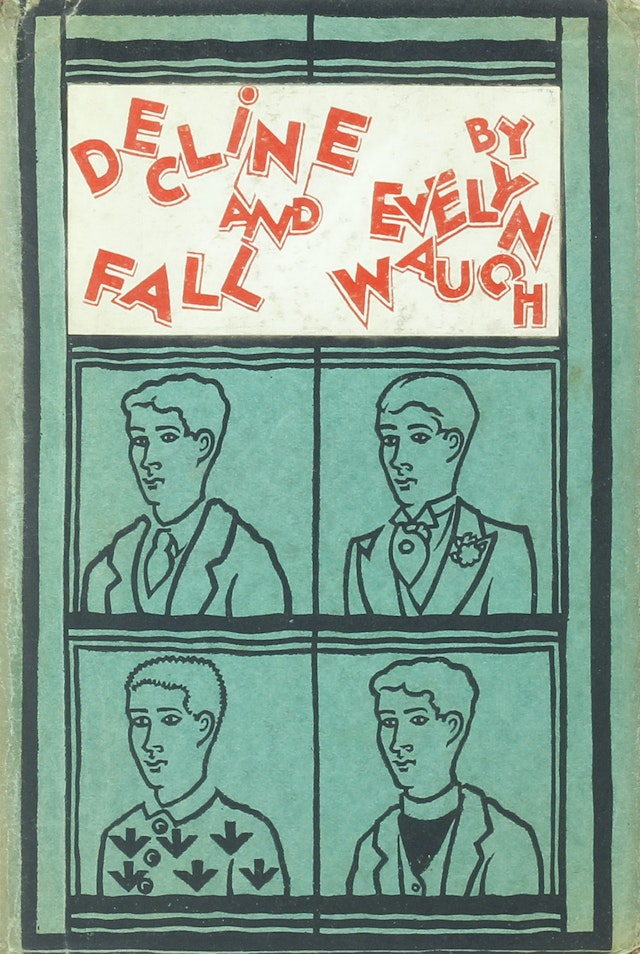 Scroll through the whole page to download all images before printing.
Scroll through the whole page to download all images before printing.Evelyn Waugh’s Decline and Fall
Decline and Fall is the debut novel by the English author Evelyn Waugh, first published in 1928. Based, in part, on Waugh’s schooldays at Lancing College, undergraduate years at Hertford College, Oxford, and his experience as a teacher at Arnold House in north Wales, the book is a social satire that employs the author’s characteristic black humour in lampooning various features of British society in the 1920s. While the title is a contraction of Edward Gibbon’s The History of the Decline and Fall of the Roman Empire, it also alludes to the German philosopher Oswald Spengler’s The Decline of the West (1918–1922), which first appeared in an English translation in 1926 and which argued, among other things, that the rise of nations and cultures is inevitably followed by their eclipse. Waugh read both Gibbons and Spengler while writing the book. Indeed, Waugh’s satire is unambiguously hostile to much that was in vogue in the late 1920s, and “themes of cultural confusion, moral disorientation and social bedlam...both drive the novel forward and fuel its humour.” Waugh himself stated in his ‘Author’s Note’ to the first edition: ‘Please bear in mind throughout that IT IS MEANT TO BE FUNNY.’ (Wikipedia)
Already public domain in countries with a “life plus 50 years” copyright.
Read on Project Gutenberg
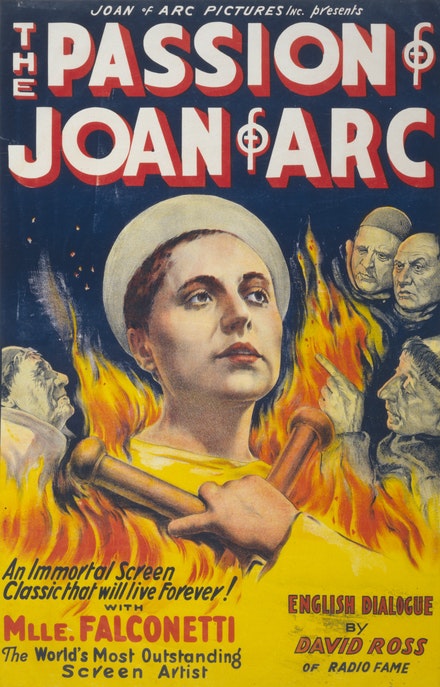 Scroll through the whole page to download all images before printing.
Scroll through the whole page to download all images before printing.The Passion of Joan of Arc directed by Carl Theodor Dreyer
La Passion de Jeanne d’Arc is a 1928 French silent historical film based on the actual record of the trial of Joan of Arc. The film was directed by Carl Theodor Dreyer and stars Renée Jeanne Falconetti as Joan. It is widely regarded as a landmark of cinema, especially for its production, Dreyer’s direction, and Falconetti’s performance, which is often listed as one of the finest in cinema history. Dreyer spent over a year researching Joan of Arc and the transcripts of her trial before writing the script. The performance and devotion to the role of the stage actress Falconetti, in her only major film role, have become legendary among film scholars. The film — shot on one huge concrete set modeled on medieval architecture in order to realistically portray the Rouen prison — is known for its cinematography and use of close-ups. Dreyer did not allow the actors to wear make-up and used lighting designs that made the actors look more grotesque. Despite the objections and cutting of the film by clerical and government authorities, it was a major critical success when first released and has consistently been considered one of the greatest films ever made. It has been praised and referenced by many film directors and musicians. In 1958, the film was voted number 4 on the prestigious Brussels 12 list at the 1958 World Expo. (Wikipedia)
Watch the film on Internet Archive with original French titles and with also with English titles.
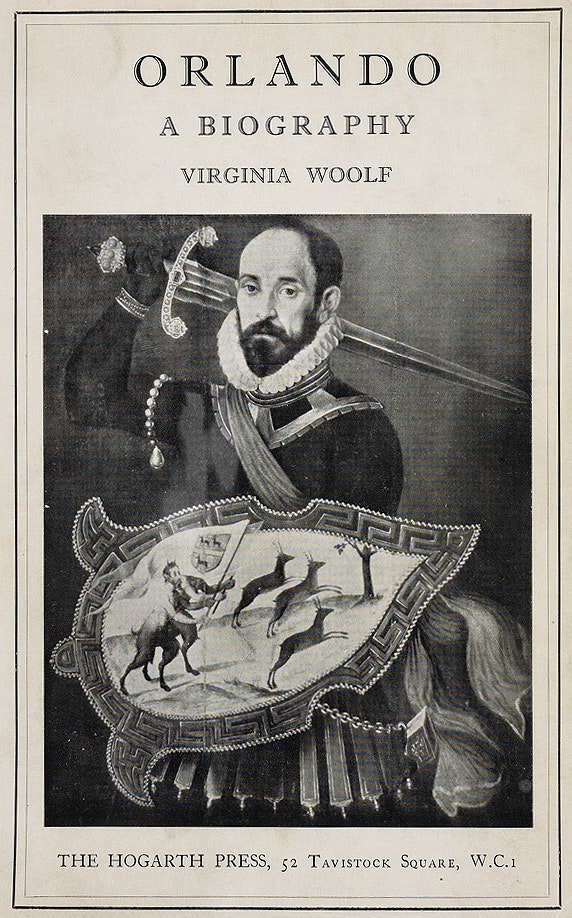 Scroll through the whole page to download all images before printing.
Scroll through the whole page to download all images before printing.Virginia Woolf’s Orlando: A Biography
Virginia Woolf’s Orlando: A Biography has been described as a history of English literature in satiric form. Arguably one of Woolf’s most popular novels, it was inspired by the tumultuous family history of the aristocratic poet and novelist Vita Sackville-West, Woolf’s lover and close friend. The book describes the adventures of a poet who changes sex from man to woman and lives for centuries, meeting the key figures of English literary history. Considered a feminist classic, the book has been written about extensively by scholars of women’s writing and gender and transgender studies. (Wikipedia)
Already public domain in countries with a “life plus 70 years” and “life plus 50 years” copyright.
Read on Project Gutenberg and Faded Page
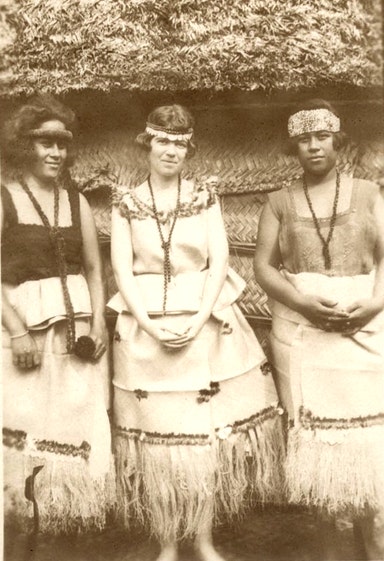 Scroll through the whole page to download all images before printing.
Scroll through the whole page to download all images before printing.Margaret Mead’s Coming of Age in Samoa
Coming of Age in Samoa: A Psychological Study of Primitive Youth for Western Civilisation is a 1928 book by American anthropologist Margaret Mead based upon her research and study of youth – primarily adolescent girls – on the island of Taʻū in the Samoan Islands. The book details the sexual life of teenagers in Samoan society in the early 20th century, and theorizes that culture has a leading influence on psychosexual development. The book launched Mead as a pioneering researcher and as the most famous anthropologist in the world. The book has sparked years of ongoing and intense debate and controversy on questions pertaining to society, culture, and science. It is a key text in the nature versus nurture debate, as well as in discussions on issues relating to family, adolescence, gender, social norms, and attitudes. Mead’s field work for “Coming of Age” has been scrutinized, and major discrepancies were found between her published statements and her field data. Samoans themselves tend to be critical of what Mead wrote of their culture, especially her claim that adolescent promiscuity was socially acceptable in Samoa in the 1920s. (Wikipedia)
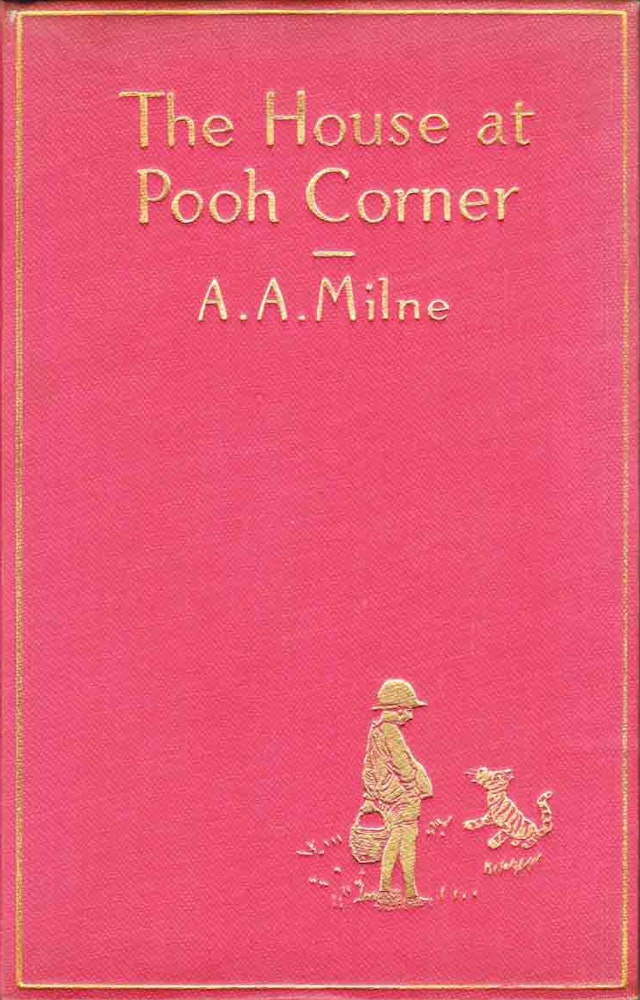 Scroll through the whole page to download all images before printing.
Scroll through the whole page to download all images before printing.A. A. Milne’s The House at Pooh Corner
The House at Pooh Corner is a 1928 children’s book by A. A. Milne and illustrated by E. H. Shepard. This book is the second novel, and final one by Milne, to feature Winnie-the-Pooh and his world. The book is also notable for introducing the character, Tigger, a bouncy and energetic tiger. The collection of tales include Eeyore’s birthday celebration, Pooh’s attempt to catch a Heffalump, and an “expotition” to the North Pole. Amidst the lighthearted moments, the book takes a poignant turn in the final chapter as Christopher Robin and Pooh share a heartfelt conversation about the inevitability of growing up. (Wikipedia)
Already public domain in countries with a “life plus 50 years” copyright.
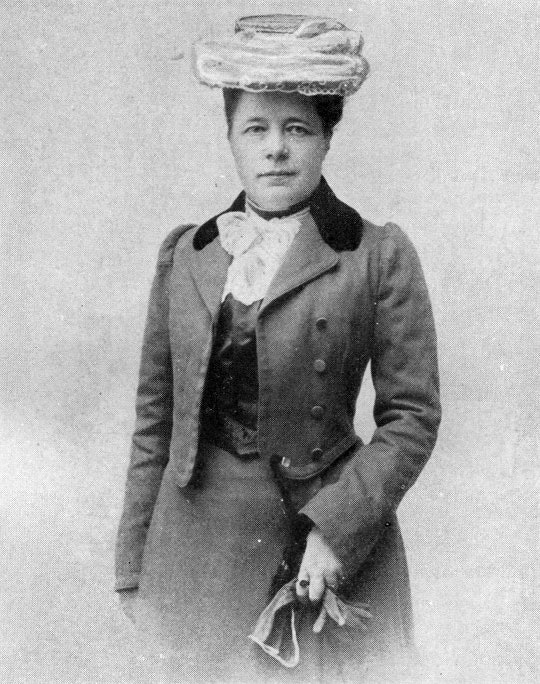 Scroll through the whole page to download all images before printing.
Scroll through the whole page to download all images before printing.Selma Lagerlöf’s Anna Svärd
Selma Lagerlöf’s Anna Svärd (1928) tells the story of a young woman who finds herself torn between duty and love. Set in 19th-century Sweden, the novel portrays the societal norms and constraints that restrict women’s choices. Many lives are interwoven in the book: Karl-Arthur, the preacher with his self-defeating ideals of self-denial and sacrifice, the practical valley girl Anna Svärd, who holds on to her own to the very end and does not want to share with anyone in heaven or on earth, Charlotte Schagerström who lives happily with her husband but still cannot forget Karl-Arthur, the obnoxious Thea Sundler, the “baron of jokes” Göran Löwensköld, a cavalier figure, and the entire Löwensköld family in Karlstad and at Hedeby Farm. The story also weaves in many episodes alongside the plot, fairy tales and folk tales, in Lagerlöf’s characteristic narrative style. It is the last book in the so-called Ring trilogy, published together in English in 1931 as The Ring of the Löwenskölds. (Wikipedia)
Already public domain in countries with a “life plus 70 years” and “life plus 50 years” copyright.
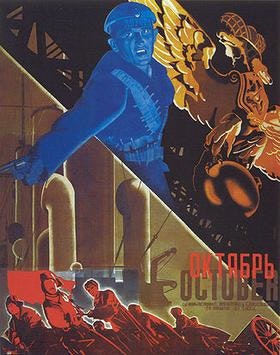 Scroll through the whole page to download all images before printing.
Scroll through the whole page to download all images before printing.October: Ten Days That Shook the World directed by Sergei Eisenstein
October: Ten Days That Shook the World (in Russian: Октябрь (Десять дней, которые потрясли мир) is a 1928 Soviet silent historical film written and directed by Sergei Eisenstein and Grigori Aleksandrov. It is a celebratory dramatization of the 1917 October Revolution, one of two films commissioned by the Soviet government to honour the tenth anniversary of the event. Eisenstein used the film to further develop his theories of film structure, using a concept he described as “intellectual montage”, the editing together of shots of apparently unconnected objects in order to create and encourage intellectual comparisons between them. One of the film’s most celebrated examples of this technique is a baroque image of Jesus that is compared, through a series of shots, to Hindu deities, the Buddha, Aztec gods, and finally a primitive idol in order to suggest the sameness of all religions; the idol is then compared with military regalia to suggest the linking of patriotism and religious fervour by the state. In another sequence Alexander Kerensky, head of the pre-Bolshevik revolutionary Provisional Government, is compared to a preening mechanical peacock. Eisenstein’s montage experiments met with official disapproval; the authorities complained that *October* was unintelligible to the masses, and Eisenstein was attacked—for neither the first time nor the last—for excessive “formalism”. He was also required to re-edit the work to expurgate references to Leon Trotsky, who had recently been purged by Joseph Stalin. (Wikipedia)
Watch the film on Internet Archive with English subtitles.
Entering the public domain in countries with a ‘life plus 70 year’ copyright term
 Scroll through the whole page to download all images before printing.
Scroll through the whole page to download all images before printing.Rudolf Bauer
Rudolf Bauer (1889–1953) was a prominent German-born painter who made significant contributions to abstract art. He played a central role in the avant-garde group Der Sturm, which would become the most important artistic center in Berlin through the 1910s and 20s, and in the 1930s his work became a cornerstone of the Solomon R. Guggenheim’s non-objective art collection. Known for his abstract compositions, characterized by vibrant colors, geometric shapes, and a focus on the interplay of form and color, Bauer’s best-known paintings include Composition VII and Construction in Space. (Wikipedia)
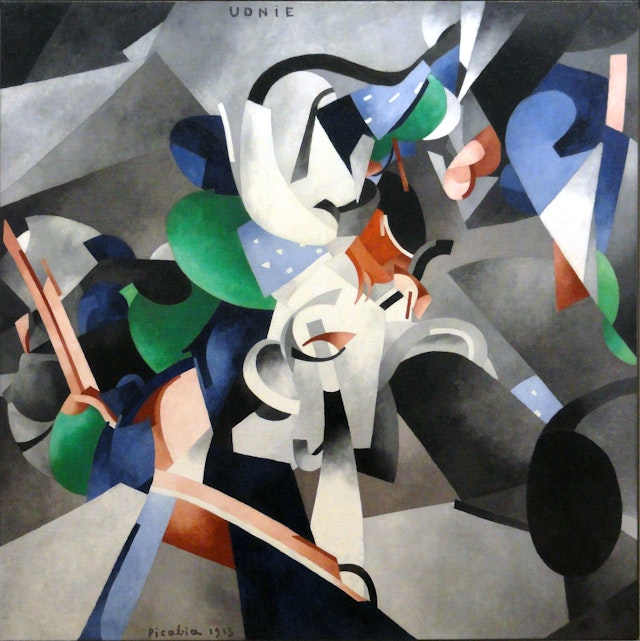 Scroll through the whole page to download all images before printing.
Scroll through the whole page to download all images before printing.Francis Picabia
Francis Picabia (1879–1953) was a notable French avant-garde painter, writer, filmmaker, and poet closely associated with the Dada movement. Considering the many styles that Picabia painted in, observers have described his career as “shape-shifting” or “kaleidoscopic”. After experimenting with Impressionism and Pointillism, Picabia became associated with Cubism. His highly abstract planar compositions were colourful and rich in contrasts. He was one of the early major figures of the Dada movement in the United States and in France before denouncing it in 1921. He was later briefly associated with Surrealism, but would soon turn his back on the art establishment. Some of his significant works include I See Again in Memory My Dear Udnie and Dances at the Spring. (Wikipedia)
Works by Francis Picabia on Wikimedia Commons
 Scroll through the whole page to download all images before printing.
Scroll through the whole page to download all images before printing.Dylan Thomas
Dylan Thomas (1914–1953) was a celebrated Welsh poet and writer, known for his iconic poems “Do not go gentle into that good night”, “And death shall have no dominion”, and the “play for voices” called Under Milk Wood. He also wrote stories and radio broadcasts such as A Child’s Christmas in Wales and Portrait of the Artist as a Young Dog. He became widely popular in his lifetime and remained so after his death at the age of 39 in New York City. Although Thomas wrote exclusively in the English language, he has been acknowledged as one of the most important Welsh poets of the 20th century, noted for his original, rhythmic, and ingenious use of words and imagery. (Wikipedia)
Works by Dylan Thomas at Project Gutenberg
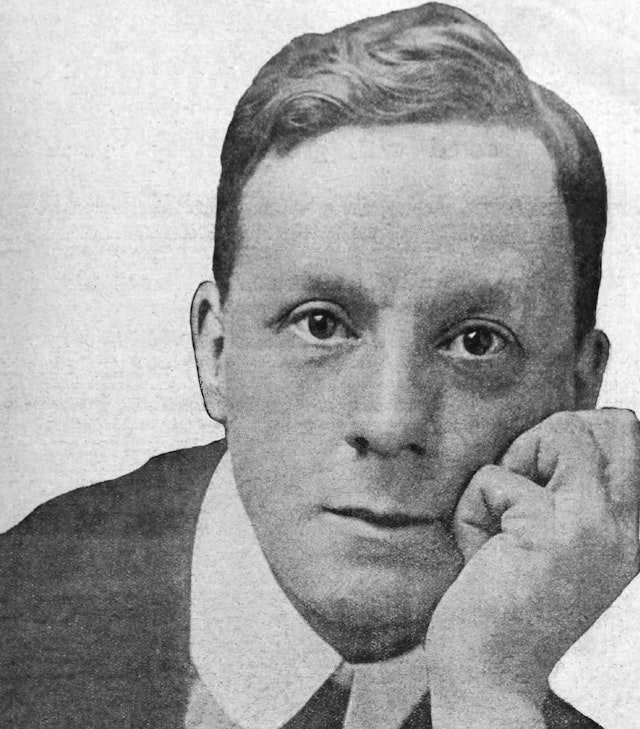 Scroll through the whole page to download all images before printing.
Scroll through the whole page to download all images before printing.Cecil Hepworth
Cecil Hepworth (1874–1953) was a pioneer in the British film industry, known for his contributions as a film director, producer, and screenwriter. He played a significant role in the early development of the British film industry and continued making films into the 1920s through his company Hepworth Picture Plays. His notable works include Alice in Wonderland (1903), the first film adaptation of Lewis Carroll’s children’s book, and Rescued by Rover (1905), an early example of narrative cinema. By 1910, Hepworth was also the inventor of Vivaphone, an early sound on disk system for adding sound to motion pictures. (Wikipedia)
Works by Cecil Hepworth on Internet Archive
Read about his *How It Feels to Be Run Over* (1900) on The Public Domain Review
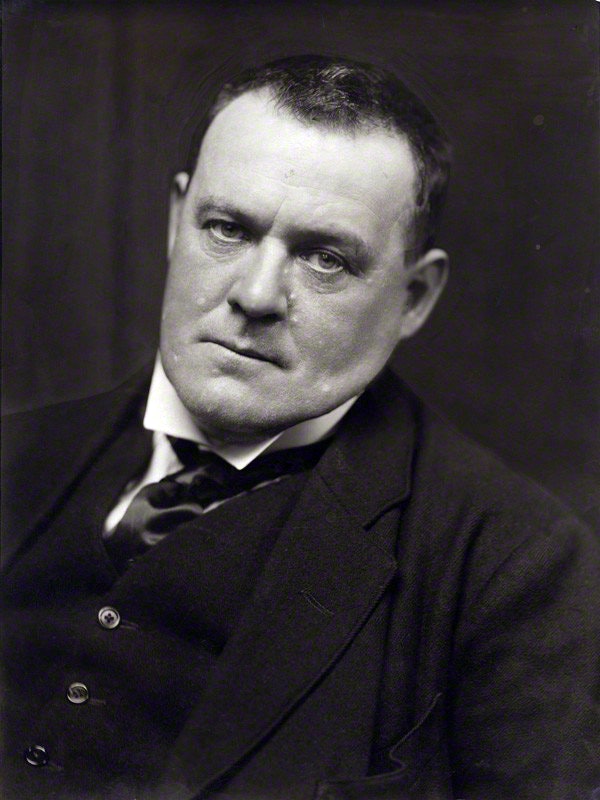 Scroll through the whole page to download all images before printing.
Scroll through the whole page to download all images before printing.Hilaire Belloc
Joseph Hilaire Pierre René Belloc (1870–1953) was a versatile Franco-English writer, historian, and satirist of the early 20th century. He gained renown for his satirical poetry, with works like Cautionary Tales that offered humorous and moralistic narratives. Belloc was also an accomplished historian, exploring topics such as The Servile State and The Path to Rome. His oratory skills, political activism, and extensive literary contributions left an enduring mark on both literature and socio-political discourse. (Wikipedia)
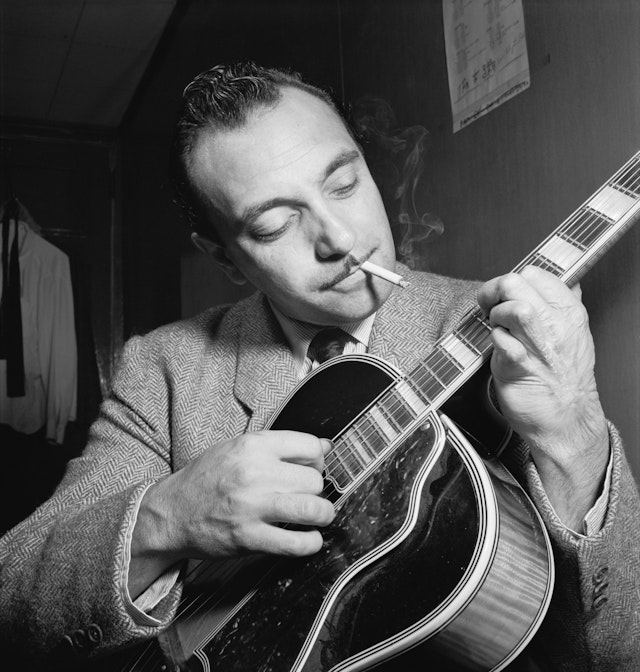 Scroll through the whole page to download all images before printing.
Scroll through the whole page to download all images before printing.Django Reinhardt
Jean Reinhardt (1910–1953), known by his Romani nickname Django, was a Romani-French jazz guitarist and composer. He was one of the first major jazz talents to emerge in Europe and has been hailed as one of its most significant exponents. With violinist Stéphane Grappelli, Reinhardt formed the Paris-based Quintette du Hot Club de France in 1934. The group was among the first to play jazz that featured the guitar as a lead instrument. Reinhardt recorded in France with many visiting American musicians, including Coleman Hawkins and Benny Carter, and briefly toured the United States with Duke Ellington’s orchestra in 1946. Reinhardt’s most popular compositions have become standards within gypsy jazz, including “Minor Swing”, “Daphne”, “Belleville”, “Djangology”, “Swing ’42”, and “Nuages”. Jazz guitarist Frank Vignola says that nearly every major popular-music guitarist in the world has been influenced by Reinhardt. He died suddenly of a stroke in 1953 at the age of 43. (Wikipedia)
Works by Django Reinhardt on Internet Archive
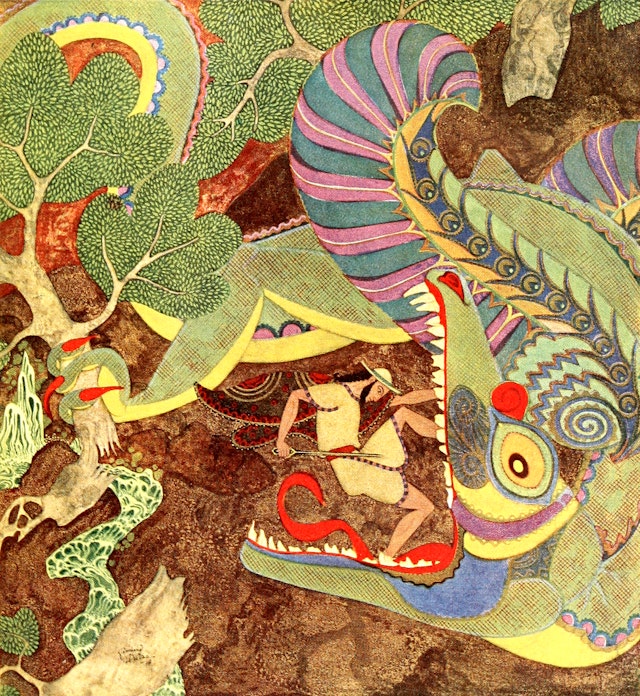 Scroll through the whole page to download all images before printing.
Scroll through the whole page to download all images before printing.Edmund Dulac
Edmund Dulac (1882–1953) was a French-British illustrator celebrated for his highly detailed magazine and book illustrations. Born in Toulouse, he studied law but later turned to the study of art at the École des Beaux-Arts. He moved to London early in the 20th century and in 1905 received his first commission to illustrate the novels of the Brontë Sisters. During World War I, Dulac produced relief books, but after the war, the deluxe children’s book market shrank, and he turned to magazine illustrations among other ventures, including designing banknotes and postage stamps, most notably those that heralded the beginning of Queen Elizabeth II’s reign. His unique artistic style, characterized by intricate details, imaginative landscapes, and a focus on the fantastical, made him one of the most prominent figures in the world of illustration in the 20th century. Some of his notable works include illustrations for The Arabian Nights and The Little Mermaid. (Wikipedia)
Works by Edmund Dulac on Wikimedia commons
 Scroll through the whole page to download all images before printing.
Scroll through the whole page to download all images before printing.Hank Williams
Hank Williams (1923–1953) was a legendary American singer-songwriter, known for recording 55 singles that reached the top 10 of the Billboard Country & Western Best Sellers chart. Despite his relatively brief career – he died at age 29 from heart failure after many years of alcohol and drug abuse – he is one of the most celebrated and influential musicians of the 20th century, especially in country music. Many artists have covered his songs and he has influenced Chuck Berry, Elvis Presley, Johnny Cash, Bob Dylan, and the Rolling Stones, among others. He was inducted into the Country Music Hall of Fame in 1961, the Songwriters Hall of Fame in 1970, the Rock and Roll Hall of Fame in 1987, the Native American Music Awards Hall of Fame in 1999, and gained a star on the Hollywood Walk of Fame. In 2010 he was awarded a posthumous Pulitzer Prize Special Citation for his “craftsmanship as a songwriter who expressed universal feelings with poignant simplicity and played a pivotal role in transforming country music into a major musical and cultural force in American life.” (Wikipedia)
Works by Hank Williams on Internet Archive
Entering the public domain in countries with a ‘life plus 50 year’ copyright term
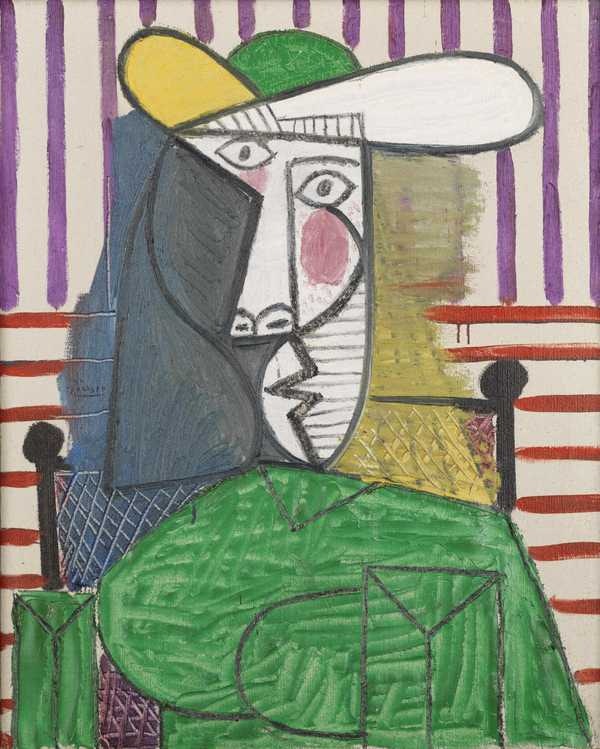 Scroll through the whole page to download all images before printing.
Scroll through the whole page to download all images before printing.Pablo Picasso
Pablo Picasso (1881–1973) was a Spanish painter, sculptor, printmaker, ceramicist, and theatre designer who spent most of his adult life in France. One of the most influential artists of the 20th century, he is known for co-founding the Cubist movement, the invention of constructed sculpture, and for the wide variety of styles that he helped develop and explore. Among his most famous works are the proto-Cubist Les Demoiselles d’Avignon (1907) and the anti-war painting Guernica (1937), a dramatic portrayal of the bombing of Guernica by German and Italian air forces during the Spanish Civil War. Exceptionally prolific throughout the course of his long life, Picasso achieved universal renown and immense fortune for his revolutionary artistic accomplishments, and became one of the best-known figures in 20th-century art. (Wikipedia)
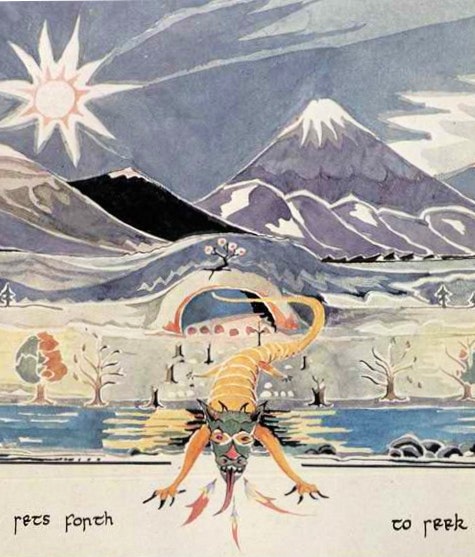 Scroll through the whole page to download all images before printing.
Scroll through the whole page to download all images before printing.J. R. R. Tolkien
J.R.R. Tolkien (1892–1973) was an English writer and philologist, renowned as the author of high fantasy works, including The Hobbit and The Lord of the Rings. From 1925 to 1945, Tolkien was the Rawlinson and Bosworth Professor of Anglo-Saxon and a Fellow of Pembroke College, both at the University of Oxford. He then moved within the same university to become the Merton Professor of English Language and Literature and Fellow of Merton College, and held these positions from 1945 until his retirement in 1959. Tolkien was a close friend of C. S. Lewis, a co-member of the informal literary discussion group The Inklings. He was appointed a Commander of the Order of the British Empire by Queen Elizabeth II on 28 March 1972. After Tolkien’s death, his son Christopher published a series of works based on his father’s extensive notes and unpublished manuscripts, including The Silmarillion. These, together with The Hobbit and The Lord of the Rings, form a connected body of tales, poems, fictional histories, invented languages, and literary essays about a fantasy world called Arda and, within it, Middle-earth. While many other authors had published works of fantasy before Tolkien, the great success of his books led directly to a popular resurgence of the genre. This has caused him to be popularly identified as the “father” of modern fantasy literature—or, more precisely, of high fantasy. (Wikipedia)


